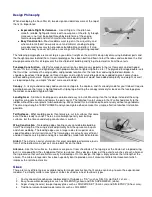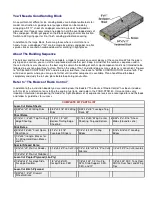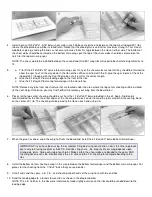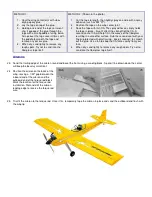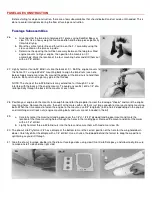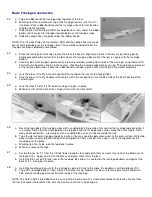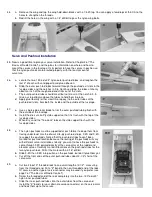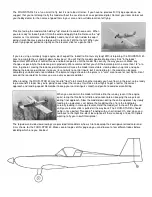
.
All of the Four-Star 40 prototypes were covered with Sig Supercoat Iron-On Plastic Covering. Supercoat is ideal for sport
models because it's lightweight and easy to apply. You will need two rolls of Supercoat (color of your choice) to cover the
model. In addition, you'll need some 1/4" wide striping tape for the canopy frame.
We recommend that you cover the wing, fuselage, tail surfaces, and control surfaces all separately before hinging and
final assembly. This way the parts are much easier to handle.
The following instructions provide advice and procedures specific to the Four-Star 40. If this is your first attempt at
covering, be certain to read the two pages of step-by-step, photo-illustrated instructions included with each roll of Sig
Supercoat. If you choose another brand of covering material, be sure to read the manufacturer's directions (supplied with
the covering) and follow them carefully.
Surface Preparation
A good covering job starts with good surface preparation. Regardless of what type of covering you choose, it won't hide
poor workmanship. Fill any small surface gaps or dents with a lightweight filler or spackling paste. Sand the entire model,
including the ailerons and tail surfaces, with 220-grit sandpaper, then again with 360 or 400-grit sandpaper.
Two areas of the fuselage require further preparation before covering the engine compartment and the cockpit. Since it's
too difficult to apply covering material to the engine compartment, it must be fuel-proofed using several coats of clear dope
or two coats of polyester (glass) resin, sanded between coats. Finish off the engine area with a few coats of colored Sig
Supercoat Dope. (Most of the Supercoat plastic iron-on films have a matching Sig Supercoat Dope color.)
The cockpit floor can be painted or covered with plastic film (we used silver Supercoat covering). The front of the head rest
(HR) shouldn't be covered until after the fuselage stringer area has been covered, so you can overlap and hide the seam.
Cut the instrument panel from the decal sheet and apply it to IP to finish off the cockpit.
Covering The Wing
Begin the wing by covering the wingtips and plywood hold-down plates. On the wingtips, run the covering material "around
the corner" about 1/8". Later, when the main top and bottom covering pieces are applied, they will overlap the wingtip
covering and can be trimmed at the wingtip corners, leaving a virtually invisible seam. Extend the covering material about
1/8" past the outside edges of the hold-down plates, again to provide an area for overlap.
Cover the main portion of the wing starting with the bottom and then the top so that the seams will be on the bottom where
they will be less visible. The top covering should overlap the full width of the leading & trailing edges.
Wait until both the top and bottom pieces of covering material have been sealed completely around their edges before
shrinking the large open areas between the ribs. Alternate between the top and bottom surface to avoid uneven shrinking
which could cause a warp. Your sealing iron or a special "heat gun" can be used (household blow dryers don't provide
enough heat). Keep the heat gun moving at all times or you may burn a hole in the covering. If you notice the covering
material "ballooning up", put a small pin hole in the bottom of each rib bay to allow the expanding air to escape.
To maximize the torsional stiffness of the wing, be sure to firmly bond the covering material to all of the spars and ribs by
going over them again with your sealing iron.
Covering The Fuselage
The fuselage should be covered with six pieces in the order described here:
Fuselage Bottom - 2 pieces, front and rear
Fuselage Sides - 2 pieces, left and right
Fuselage Top - 2 pieces, top deck and stringers
All seams should overlap about 3/16". When covering solid wood surfaces like the front of the fuselage sides, better
results can be obtained by starting at the center and working toward the outer edges, allowing air to escape as you iron.
The trickiest part of covering the fuselage is the stringer area. Start by applying one edge of the covering to one of the
fuselage sides, overlapping 3/16" onto the side covering. Drape the material over the stringers, pulling out any major
wrinkles. Carefully tack the material to the other fuselage side,then trim off the excess, again leaving a 3/16" overlap. To
avoid slicing into the material underneath, slide a piece of thin cardboard under the excess stringer covering before cutting
it with a knife. Use a straight edge to make a nice, straight cut.
Summary of Contents for Four-Star 40 SIGRC44
Page 1: ......

